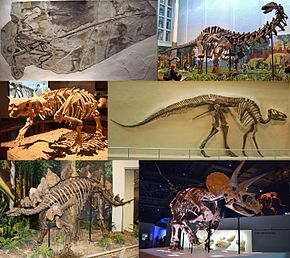
Scientists name new species of Dinosaur after Canadian icon
It stalked Alberta, Canada, about 71 million years ago in what is now the Red Deer River Valley.
The find recognizes Currie for his decades of work on predatory dinosaurs of Alberta. Research on the new species is published July 17 in the Canadian Journal of Earth Sciences read the Royal Ontario Museum website.
Palaeontologists initially thought that the bones of Albertavenator belonged to its close relative Troodon, which lived around 76-million-years-ago — five million years before Albertavenator. Both dinosaurs walked on two legs, were covered in feathers, and were about the size of a person. New comparisons of bones forming the top of the head reveal that Albertavenator had a distinctively shorter and more robust skull than Troodon, its famously brainy relative.
“The delicate bones of these small feathered dinosaurs are very rare. We were lucky to have a critical piece of the skull that allowed us to distinguishAlbertavenator as a new species.” said Dr. David Evans, Temerty Chair and Senior Curator of Vertebrate Palaeontology at the Royal Ontario Museum, and leader of the project. “We hope to find a more complete skeleton of Albertavenator in the future, as this would tell us so much more about this fascinating animal.”
Identifying new species from fragmentary fossils is a challenge. Complicating matters of this new find are the hundreds of isolated teeth that have been found in Alberta and previously attributed to Troodon. Teeth from a jaw that likely pertains to Albertavenator appears very similar to the teeth of Troodon, making them unusable for distinguishing between the two species.
"This discovery really highlights the importance of finding and examining skeletal material from these rare dinosaurs," concluded Derek Larson, co-author on the study and Assistant Curator of the Philip J. Currie Dinosaur Museum."
The identification of a new species of troodontid in the Late Cretaceous of North America indicates that small dinosaur diversity in the latest Cretaceous of North America is likely underestimated due to the difficulty of identifying species from fragmentary fossils.
“It was only through our detailed anatomical and statistical comparisons of the skull bones that we were able to distinguish between Albertavenator and Troodon,” said Thomas Cullen, a Ph.D. student of Evans at the University of Toronto and co-author of the study.
The bones of Albertavenator were found in the badlands surrounding the Royal Tyrrell Museum, which Dr. Currie played a key role in establishing in the early 1980s.
The rocks around the museum are the same age as some of the most fossiliferous rocks in the area of the newly erected Philip J. Currie Museum, also named in Dr. Currie’s honour. Although Dr. Currie has already had several dinosaurs named after him, this is only the second one from Alberta, where he has made his biggest impact.
The fossils of Albertavenator studied by Evans and his team are housed in the collections of the Royal Tyrrell Museum. This is another example of a new species of dinosaur being discovered by re-examining museum research collections, which continually add to our understanding of the evolution of life on Earth. This study suggests that more detailed studies of fragmentary fossils may reveal additional, currently unrecognized, species.
Representive images of different kinds of Dinosaur: Wikimedia Commons
Support Our Journalism
We cannot do without you.. your contribution supports unbiased journalism
IBNS is not driven by any ism- not wokeism, not racism, not skewed secularism, not hyper right-wing or left liberal ideals, nor by any hardline religious beliefs or hyper nationalism. We want to serve you good old objective news, as they are. We do not judge or preach. We let people decide for themselves. We only try to present factual and well-sourced news.







